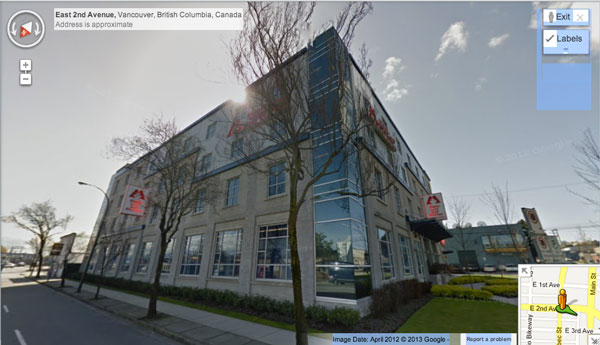
Storage. Along with money, it seems to be something people never have enough of. The past half century has seen the doubling of the consumption rate of North Americans. Despite a decrease in average household size from 3.5 in 1971 to 2.5 in 2011 , the average Canadian house size has almost doubled from an average of 1,050 square feet in 1975 to 1,950 square feet in 2010. Needless to say, we have a lot of stuff.
For instance, if you move from a comfy 1-bedroom, 900 square-foot-apartment in Toronto to Vancouver, you will need to lug around 5,000 pounds of your stuff – all this after generously giving your excess picture frames and CDs to friends and family, multiple postings on Craigslist, and a sizeable trip to the local dump to let go of all the old Christmas cards and university binders.
Interestingly, those who live out of their RVs – the most mobile of our citizens – calculate that their vehicle must be robust enough to support about 1,500 pounds of stuff per person, aside from all the built-in appliances and furniture. No small amount.
This tendency to collect stuff has long reaching implications – many of which have been explained and criticized by various people in a numerous disciplines. However, its relationship to the drastic growth of self-storage facilities—a $20 billion business—often goes unnoticed.
The modern self-storage facility appeared in the 1960s, growing a staggering 800% alone between 1984 and 2009. By this time there was more than 2.35 billion square feet of self storage in the United States – a land area equivalent to three times Manhattan Island under a single roof. The single largest self-storage facility in the world is believed to be the humongous sixteen-acre Alpine Storage facility in Salt Lake City.
Although specific global numbers vary, it is estimated that approximately 90 percent of all self-storage facilities are located within North America, a fact that is related directly to our consumption patterns.
Although most of the self-storage facilities lie within industrial and commercial-zoned land parcels in rural and suburban areas, more recent trends have shown a growing number being constructed on better plots of land near residential and commercial areas within metropolitan areas, closer to where many of their tenants lie. Roughly one in ten American households currently rent a self storage unit, and the number is rising.
As one would guess, this increasing demand for self storage is being fueled by the migration of people and various lifestyle changes – such as divorce, retirement and, one of the issues that is currently and will likely be playing more of a role in the future, the demographic inversion currently underway across North American cities.
Simply speaking, as people with consumption patterns fostered on larger domestic spaces of the suburban era are finding their way back into the tighter spaces created within cities, self-storage is often the logical solution.
From the urban and architectural perspective, however, it is clear that these (often) multi-story facilities will be playing a larger and larger role within the urban fabric of our cities. They are already. And this demands that the planning and design communities – most of whom seem oblivious to the pattern – begin thinking about different, innovative approaches to storage in the city.
What are the attributes of these facilities? With urban land increasingly becoming a dwindling resource, are centralized facilities the best format for this use? Can or should they be have a stronger relationship with broader, civic storage needs, such as bike parking around transit nodes? Can they meaningfully enrich the urban fabric around them and contribute to the the large goals of good city-building, instead of simply dressing their suburban ancestors in different clothes?
Odd questions to ask about storage facilities, perhaps, but definitely ones worth thinking about.
Stand-up comedian George Carlin once poignantly said that “a house is just a pile of stuff with a cover on it”. Clearly, given the trend of the past few decades, that statement can move beyond the domestic sphere to include all of our buildings. And with a growing number of people with more stuff squeezing into the tighter and tighter spaces of the city, it is clear that an important part of the future successes of our cities is going to revolve around designing Storage Urbanism.
***
Erick Villagomez is one of the founding editors at Spacing Vancouver. He is also an educator, independent researcher and designer with personal and professional interests in the urban landscapes. His private practice – Metis Design|Build – is an innovative practice dedicated to a collaborative and ecologically responsible approach to the design and construction of places. You can also see some of his drawing and digital painting adventures at Visual Thoughts.


One comment
Thank you for beginning the discussion. Your questions are not strange but rather quite relevant. Storage should provide more specific needs and should be located closer to and/or built in with residential / commercial developments. It is convincing the local city/municipality that the business of self storage is not “industrial” in nature but rather a required service for those now living in these much smaller spaces. It also helps to support the re-use of items rather than toss and replace by providing somewhere to put them. The idea of this space being closer to home also reduces the car travel required to go and get the items when required.